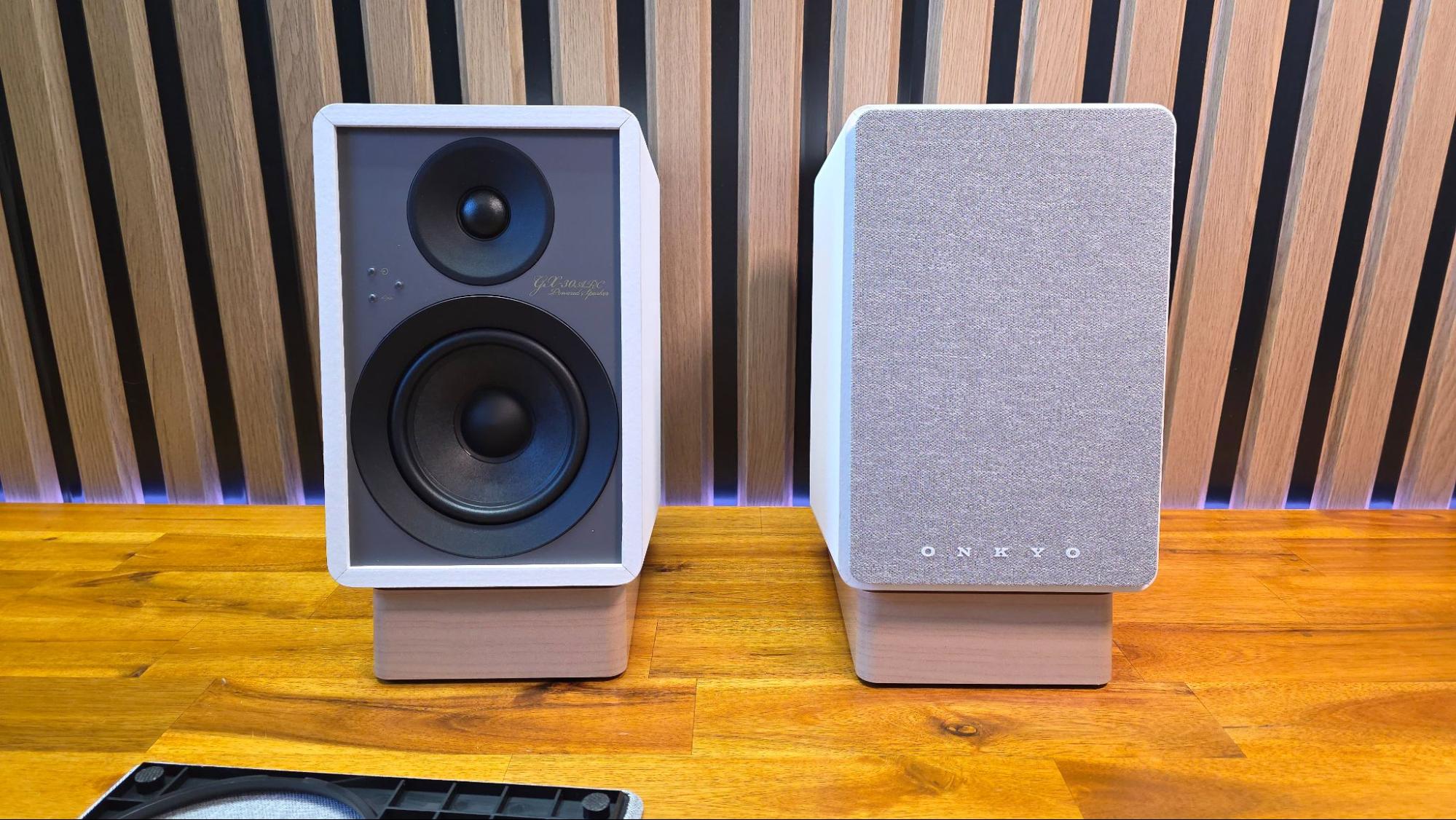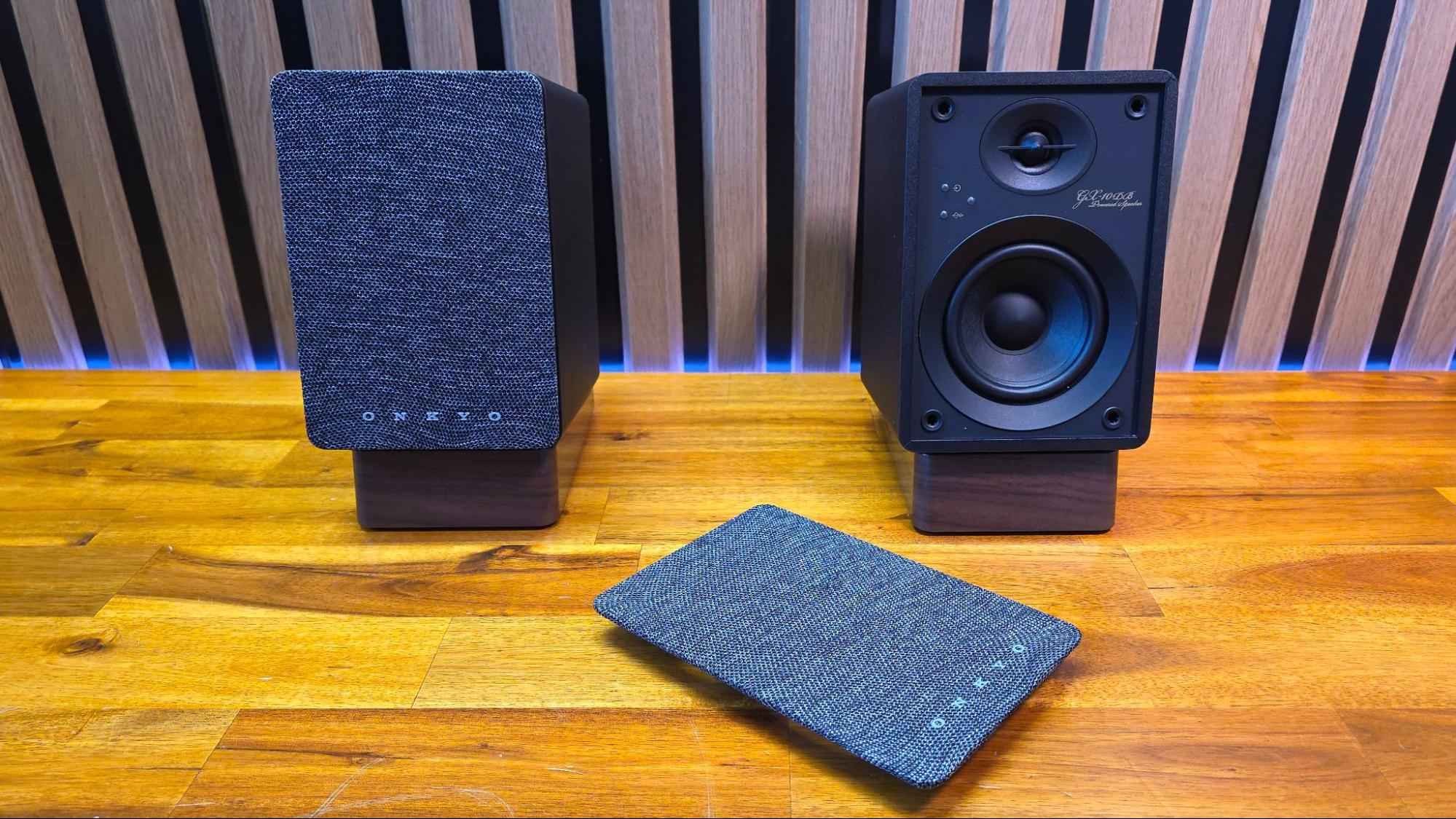Why you can trust Tom’s Hardware
Our expert reviewers spend hours testing and comparing products and services so you can choose the best for you. Find out more about how we test.
Back at CES in early January, the Onkyo brand had a bit of a re-launch with two new creator and consumer-focused speaker models, the GX-10DB ($199) and GX-30ARC ($299). The speakers look great and promise lots of features – Bluetooth 5.3, USB-C connectivity, a built-in phono preamp, and HDMI ARC on the higher-end model, to name a few. As someone who remembers Japan’s Onkyo brand fondly for its 80s- and 90s-era Hi-Fi equipment, I was curious whether or not these new speakers could live up to the brand’s legacy and earn a spot on our Best PC Speakers list.
I put the speakers through some testing and lots of listening to say for sure so find out where they stand. There’s little doubt that these speakers are loaded with features and look great, at least from afar. But the design could use a bit more attention to detail.
Onkyo Creator Series GX-30ARC, GX-10DB specs
|
Speaker Type |
GX-10DB |
GX-30ARC |
|---|---|---|
|
Driver Type |
3-inch woofers, 3/4-inch twetters |
4-inch woofers, 3/4-inch tweeters |
|
Frequency Response |
70Hz-20k Hz |
55Hz-20k Hz |
|
Power |
2×17 watts |
2×25 watts |
|
Inputs |
USB-C, optical, RCA, Bluetooth 5.3 LE |
USB-C, optical, RCA, Bluetooth 5.3 LE, 3.5mm Aux, HDMI |
|
Cables |
TK speaker wire |
2-meter DIN speaker cable |
|
Size |
119 x 173 x 140 mm (4.69 x 6.81 x 5.5 inches |
146 x 220 x 170 mm (5.75 x 8.7 x 6.7 inches) |
|
Weight |
7.05 pounds |
11.24 pounds |
|
Lighting |
None |
None |
|
Software |
None |
None |
|
Features |
10% angled stands |
10% angled stands, HDMI-ARC |
|
MSRP |
$199 |
$299 |
Exterior design
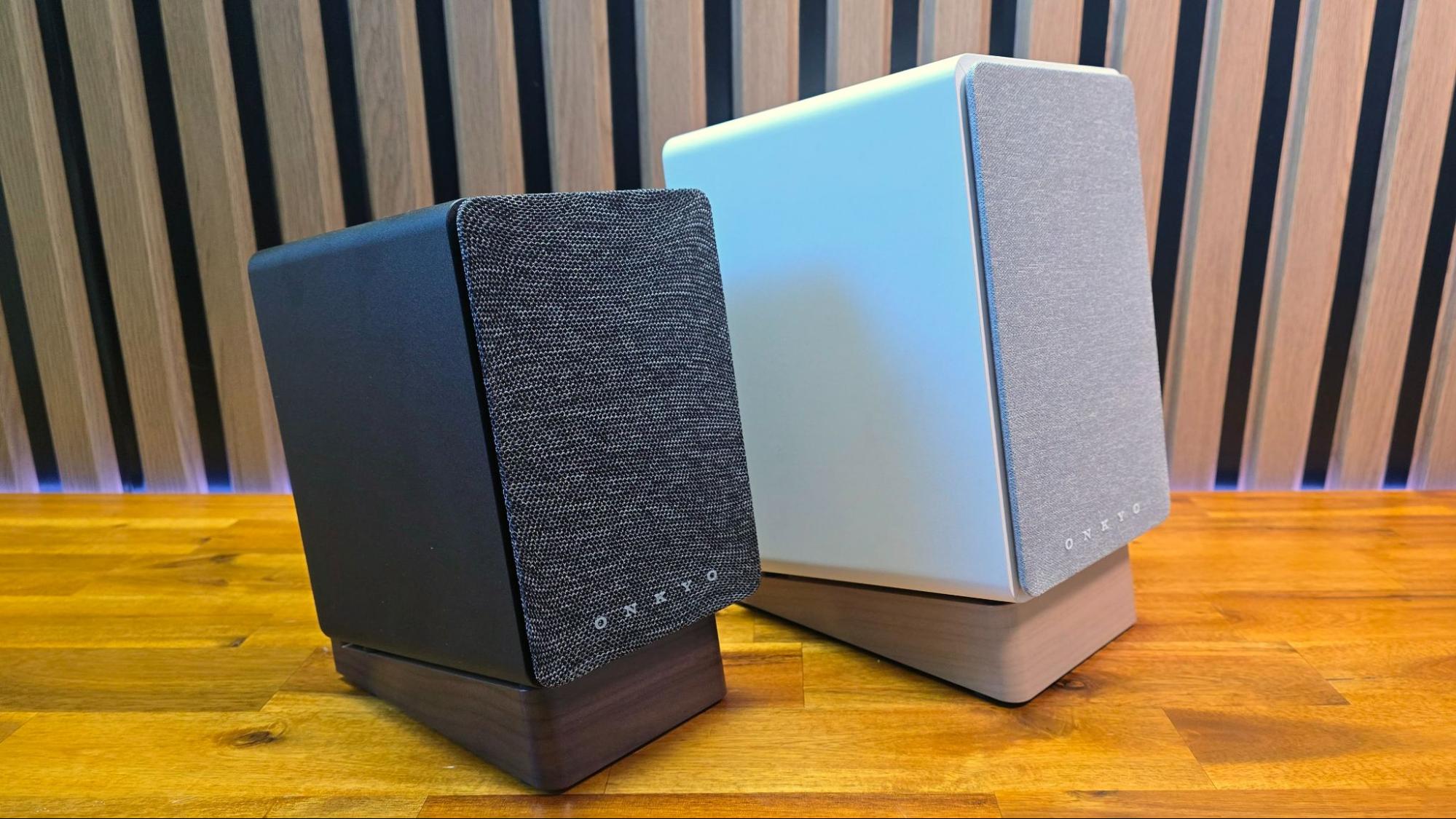
Both the Creator GX-10DB (6.81 x 4.68 x 5.51inches, $199) and the larger Creator GX-30ARC (8.66 x 4.75 x 6.69 inches, $299) have removable cloth front covers, with the larger models’ held in place by magnets, while the smaller set just has pins that push into four holes around the enclosure. Both models are also offered in white or black and ship with a set of included stands that nicely angle the speakers up 10%, toward your ears.
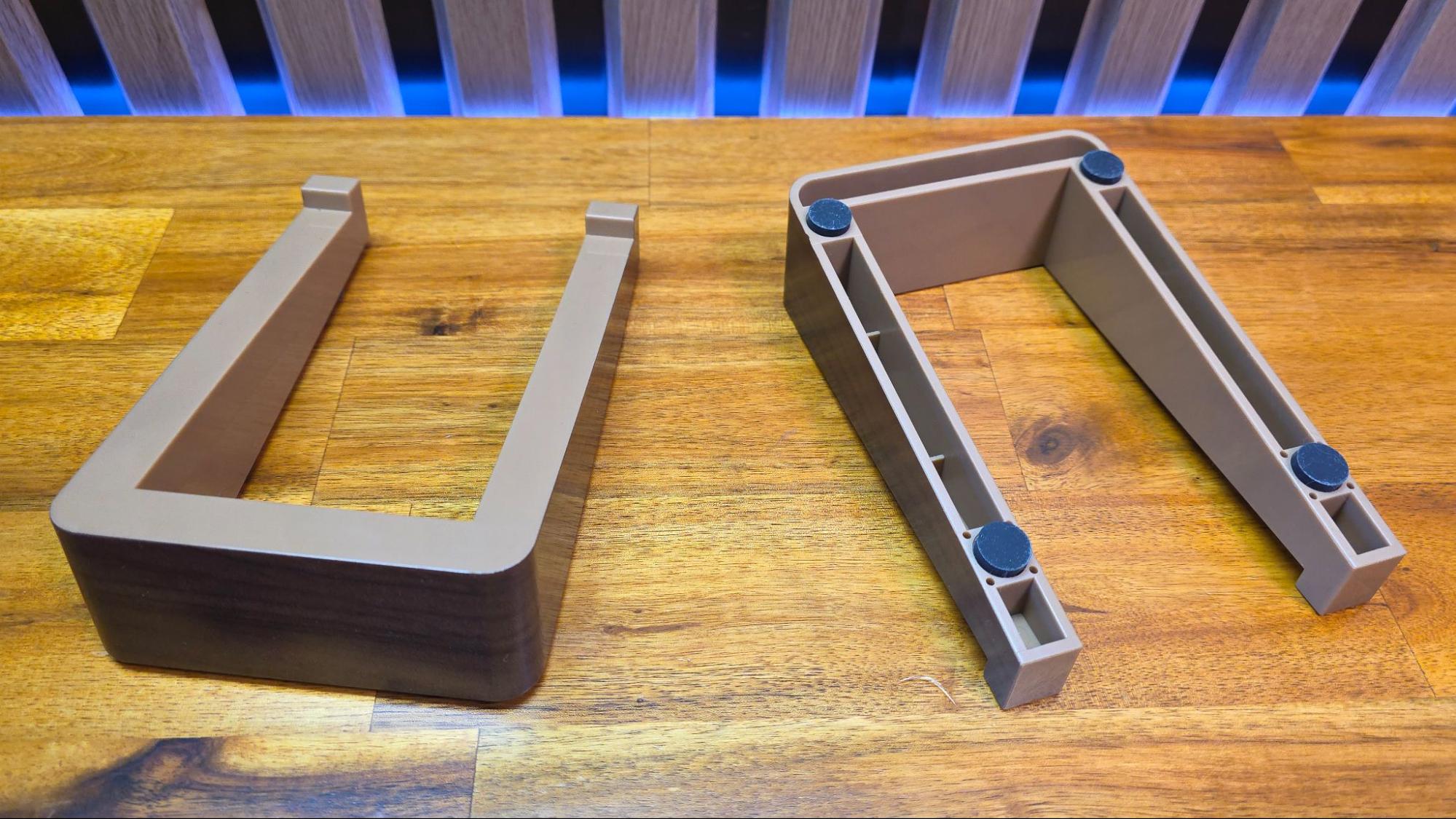
The latter is a nice inclusion, considering competing models like the AudioEngine A2+ sell their speaker stands separately. That said, the stands here, while sturdy enough to limit vibration and wrapped in a wood-grain finish, are plastic. I’d prefer metal or solid foam stands– particularly for the larger, pricier GX-30ARC. But hey, it’s hard to argue with free speaker stands.
With the cloth fronts removed, you can see the woofer (3 inches on the GX-10DB, 4 inches on the GX-30ARC, as well as the tweeters (3/4 inch for each model). Also visible are the three LEDs. One color-changing light indicates input, the LED below it is a “Flat sound mode” indicator, and the infrared light for the remote.
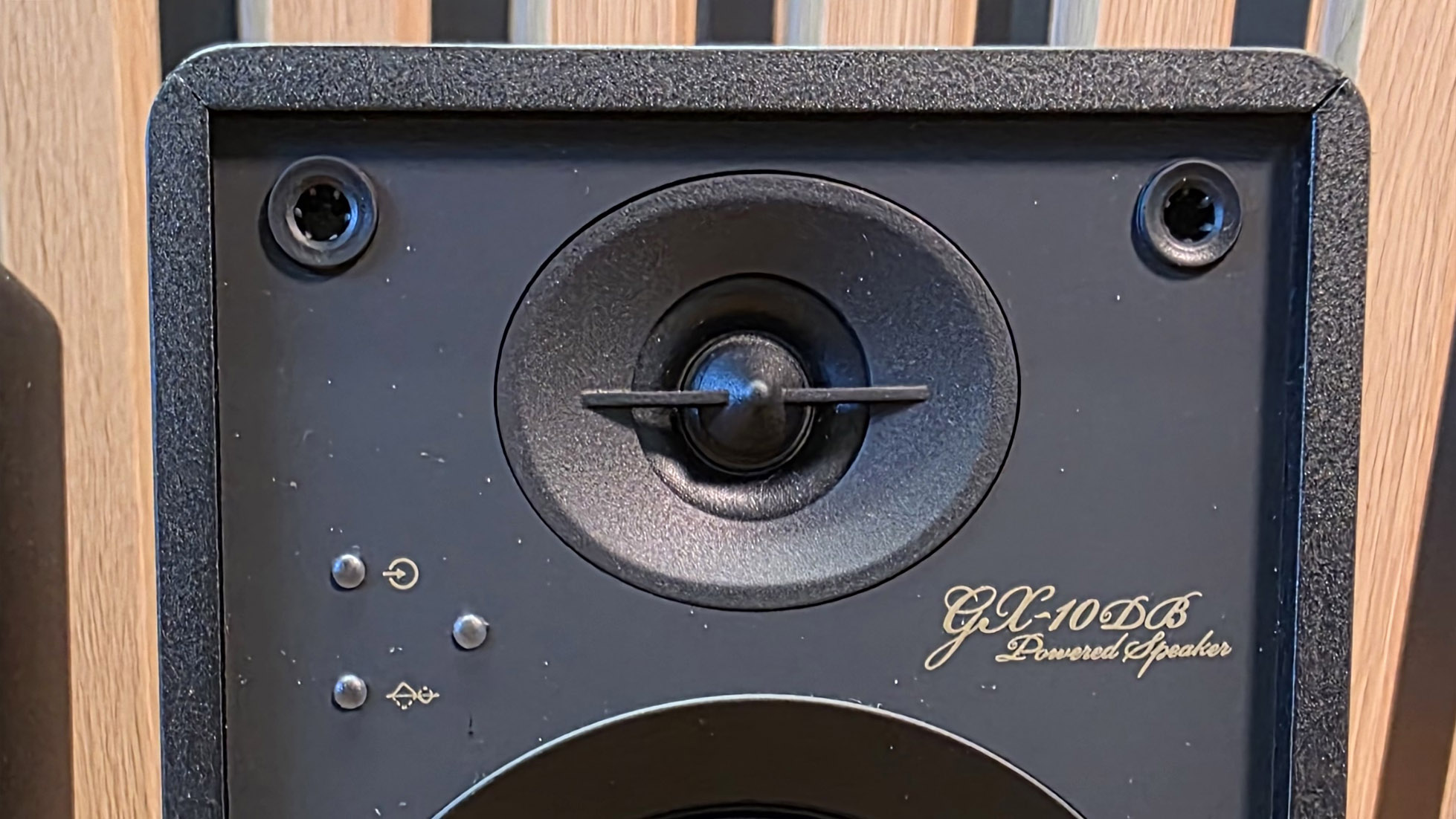
With the cover off, it’s also easy to see one of the few issues I have with the speakers’ build quality. It’s more noticeable on the white speakers than the black models, but the corner seams of the four speaker enclosures are visible (front and back, but the back is much less of an issue), and in at least one corner on our review units, there is a noticeable gap.
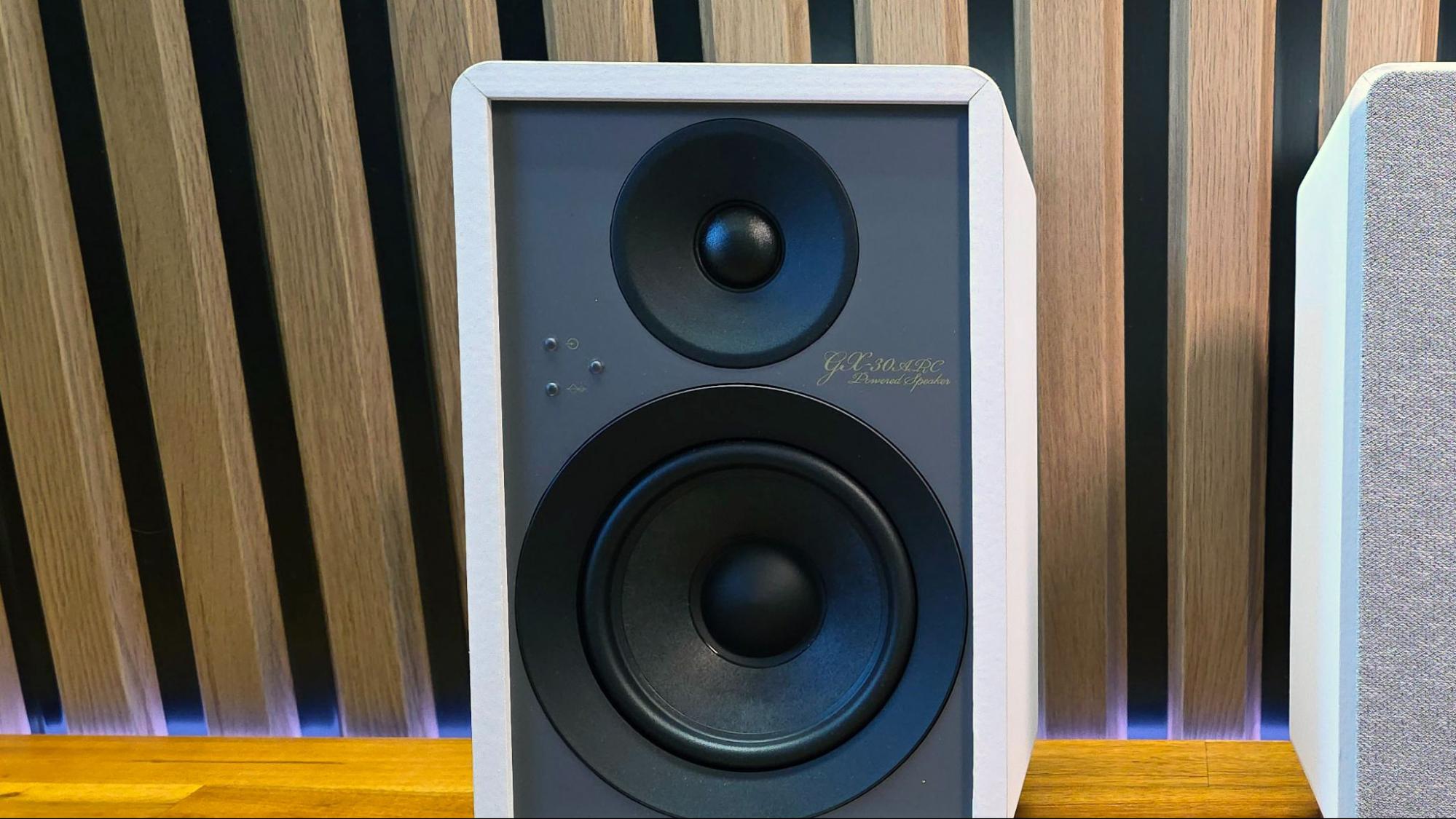
The seams aren’t super noticeable unless you’re up close, and they are partially covered by the cloth speaker grilles. But given the cost of these speakers and how good competitors from companies like AudioEngine and Kanto look (while also sounding good) for around $250, the seams feel like an oversight that would have been simple to fix. A sticker or a dab of paint that’s exactly the right color would be an improvement.
Connectivity aplenty
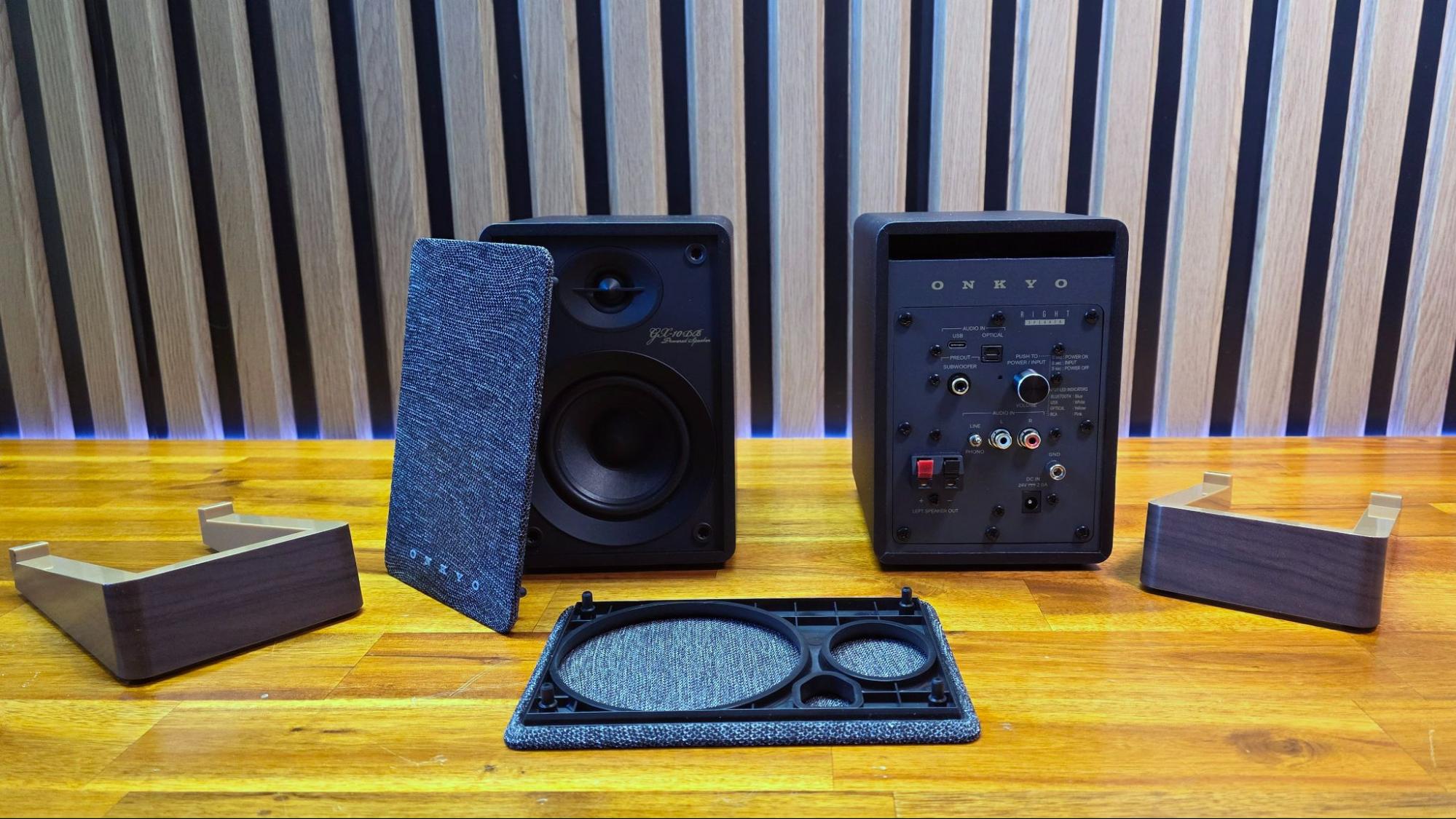
Neither of the new Onkyo Creator speakers can be said to be lacking in connectivity. Both offer Bluetooth 5.3 LE for wireless connections, as well as USB-C, RCA (with a built-in Phono stage for vinyl record players), optical, as well as a subwoofer connector.
The larger, pricier GX-30ARC adds a 3.5 mm aux jack, as well as ARC, which lets you pull audio directly from an HDMI cable. Both also have ground connectors, a knob at the back for switching between inputs and powering the speakers on or off. The GX-30ARC also has a switch so you can set the primary speaker (the one with the connections) as left or right.
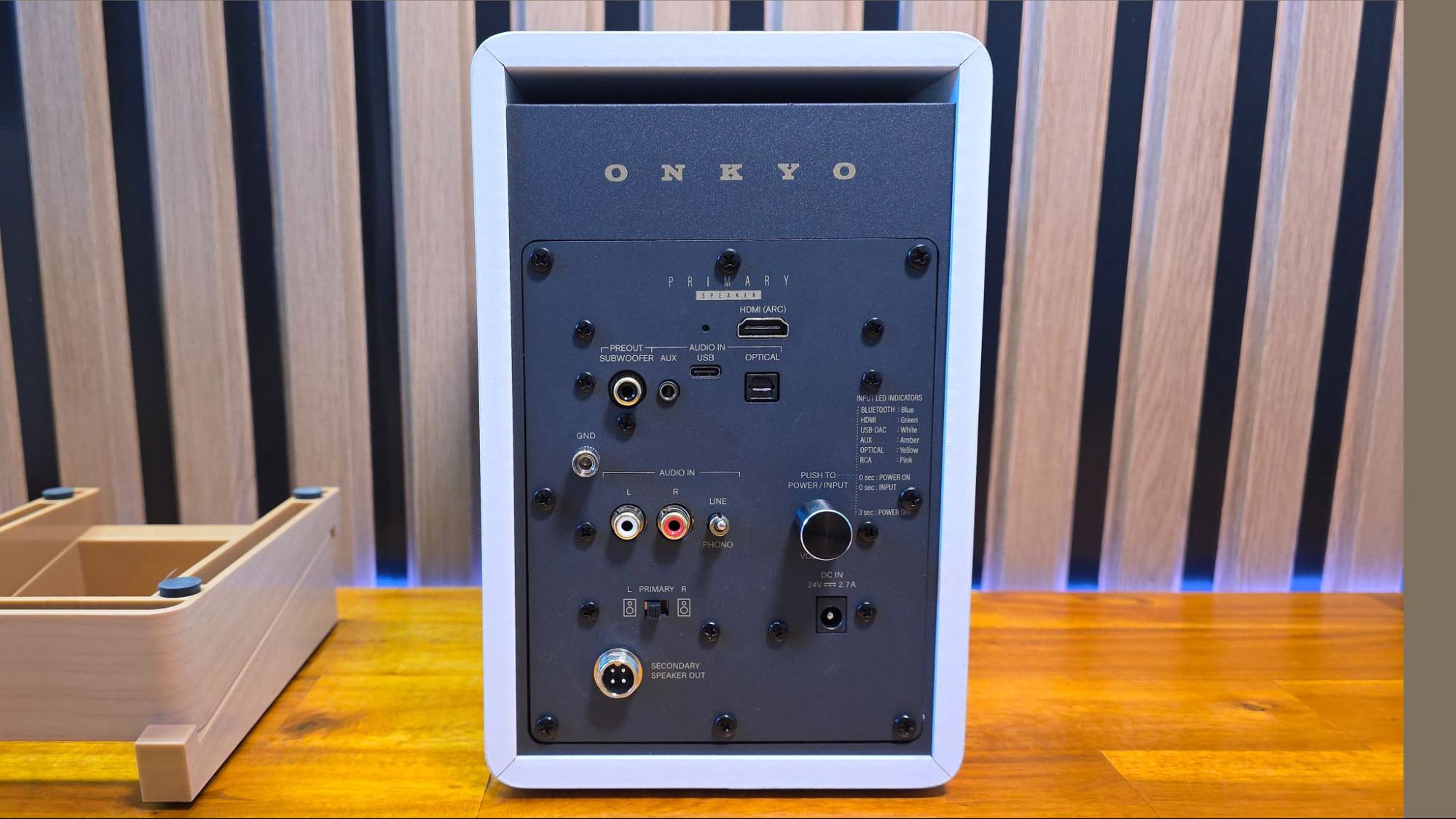
But oddly, while the GX-10DB uses standard speaker wire and red/black terminal tabs, the GX-30ARC uses a proprietary four-pin, screw-on DIN-like connector and includes a 2-meter cable to run between the speakers.
While this certainly makes the connection between speakers much more secure, it also effectively limits how far apart you place the speakers. I wanted to set them up in my living room, connected to my Fluance record player, but I couldn’t place the speakers in the corners of my room like my primary speakers are now.
A company representative did tell me that Onkyo plans to offer a longer cable as a separate purchase. But I’d prefer to see a 3-meter cable included as standard (for those non-PC use cases, at least), or to see standard speaker wire used, as the company does with the GX-10DB.

Both models also come with slim plastic remotes that use AAA batteries (included) and let you do most of what you’d want with the speakers from afar. I prefer the remote that comes with Flaunce’s Ai41 speakers, though, because it lets you adjust bass and treble, and also lets you dim or turn off the power/input LED. The latter is great for those times when you’re streaming a movie or TV show in a dark room.
Performance of the Onkyo Creator speakers
I listened to both sets of Onkyo speakers off and on for weeks, both connected to my PC via USB-C and to my ceiling-mounted 4K projector via Bluetooth. As noted earlier, I also tried to connect the larger GX-30ARC to my turntable to compare them to my larger, more-expensive AudioEngine A5+ speakers (and check out the built-in phono preamp). But the proprietary cable wasn’t long enough to place the speakers on either side of my living room.
I did briefly listen to them connected to my turntable, but as they were about five feet closer together than my primary speakers, I wasn’t really able to compare the two, other than to confirm that the GX-30ARC doesn’t really get loud enough to fill my entire living room (at least without a subwoofer) the way I’m used to with my A5+ speakers. But that’s not particularly surprising, given the AudioEngine speakers are larger and cost about $100 more.
Specifically, I found the smaller GX-10DB to be a decent pairing for streaming movies on my projector (I’m not exactly into recreating the booming audio experience of a modern theater), and a nice solution for listening to music close up at my standing desk. The larger GX-30ARC speakers get noticeably louder, which I liked when listening to music and playing games at my main sit-down desk (also in my living room) where I’m often not as close to the speakers.
That said, my living room desk is fairly small, which doesn’t leave enough room for the 5.75 x 6.7-inch footprint of the larger Onkyo speakers. They are, though, smaller than the 6.5 x 7.6-inch dimensions of the Fluance Ai41 speakers, which didn’t get as loud as the Onkyo GX-30ARC in our testing. In short, make sure to check your free desk space before considering these bulkier speakers for PC use.
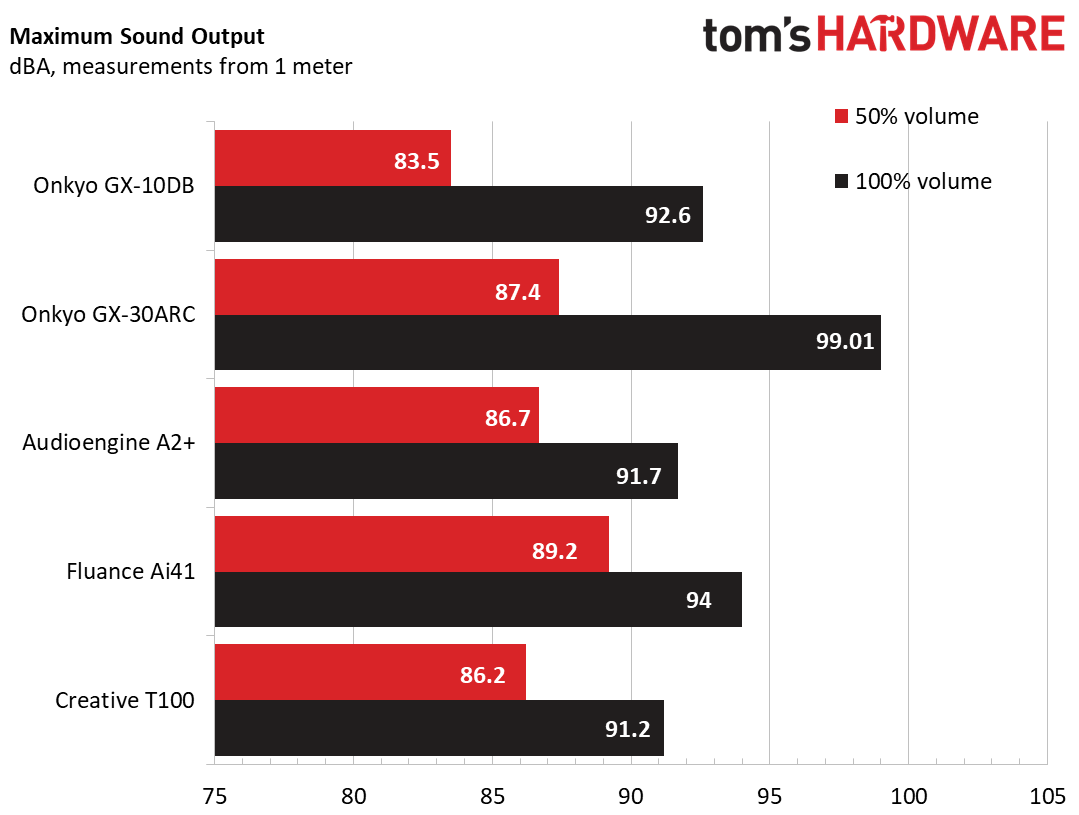
In our sound level measurements from one meter away from the speakers, the GX-1-DB was slightly louder than the excellent AudioEngine A2+ speakers, which cost about $50 more (when they aren’t on sale). But the Onkyo speakers are also larger and, thanks largely to the visible corner seams, don’t look as polished and premium as the A2+ (although that’s subjective).
The $299 Onkyo GX-30ARC looked better in our volume testing, nudging just over the 99 dBA mark, making them easily the loudest speakers here. BlueAnt’s Soundblade gets even louder (we measured 104.7 dBA), while taking up less space and costing just $199. But it’s a compact 2.1 soundbar that won’t give you the same kind of stereo separation as speakers and isn’t as versatile in terms of connections.
In short, both Onkyo speakers sound very good for most typical PC speaker tasks, and both have connections to add a subwoofer more added bass. The GX-30ARC kicks out significantly more volume for high-volume listening when you aren’t sitting right in front of the speakers. But they also will require a larger desk (or at least a desk with less clutter).
Conclusion
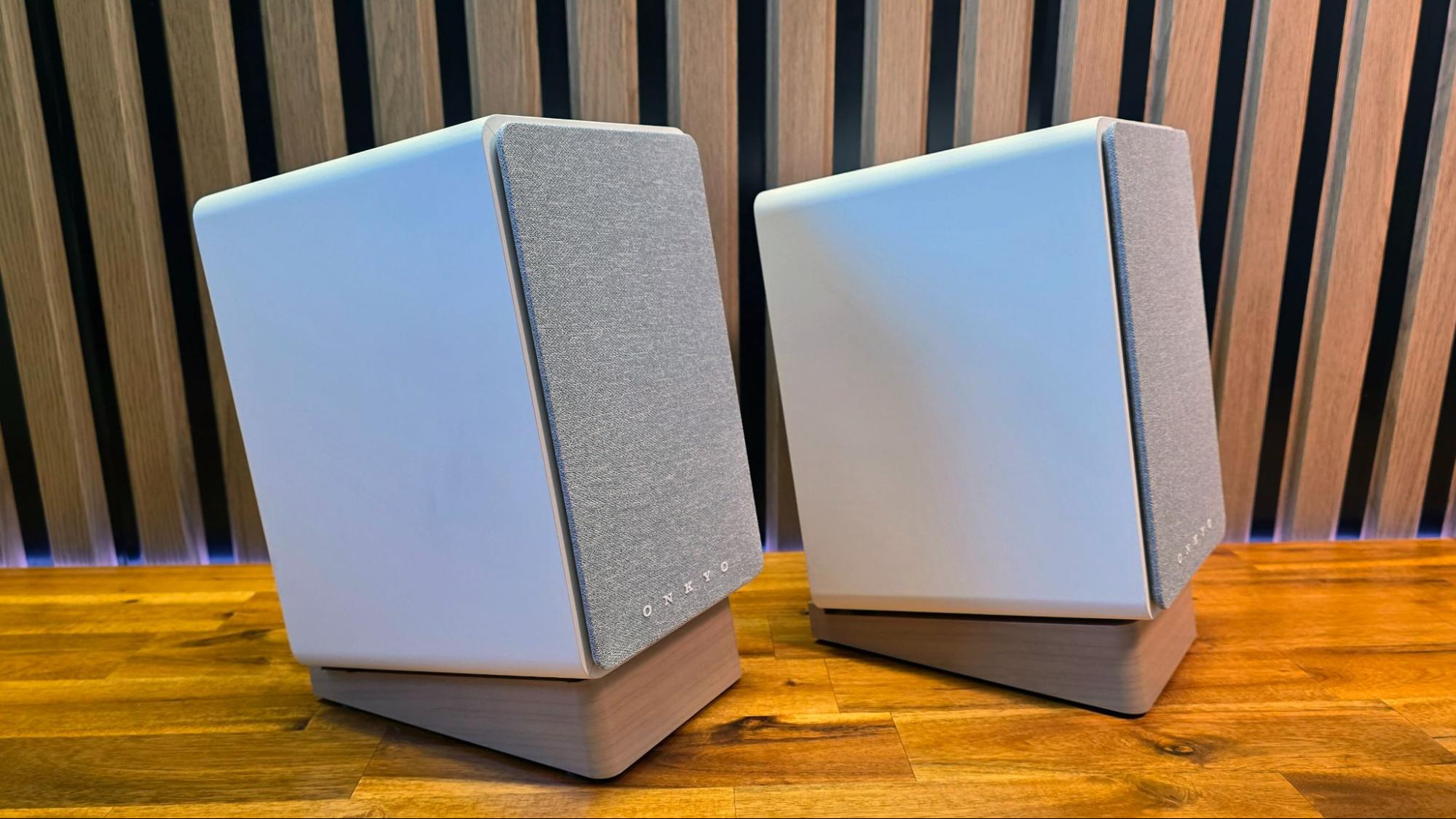
I hope the Onkyo Creator Series GX-10DB and GX-30ARC are a first sign of great things to come for a resurgent Onkyo brand. They sound very good, look nice (apart from a few oddly visible seams), and are absolutely packed with connectivity, making them extremely versatile, whether you’re planning on connecting them to a gaming PC, a console, or your home AV setup – which is particularly handy for setups like my small apartment, where all three are in the same place.
That said, the plethora of connections (and if you can make use of them, the phono stage and the ARC support for the GX-30ARC) are the stand-out features of these speakers. The design, while attractive, has visible seams at the front. And the sound output, while quite good (particularly on the larger, higher-end model), doesn’t stand out from the plethora of similarly priced competition in the mid-sized powered speaker space. The GX-30ARC does get quite loud, though, if that’s important for you and you don’t have space for larger speakers.

